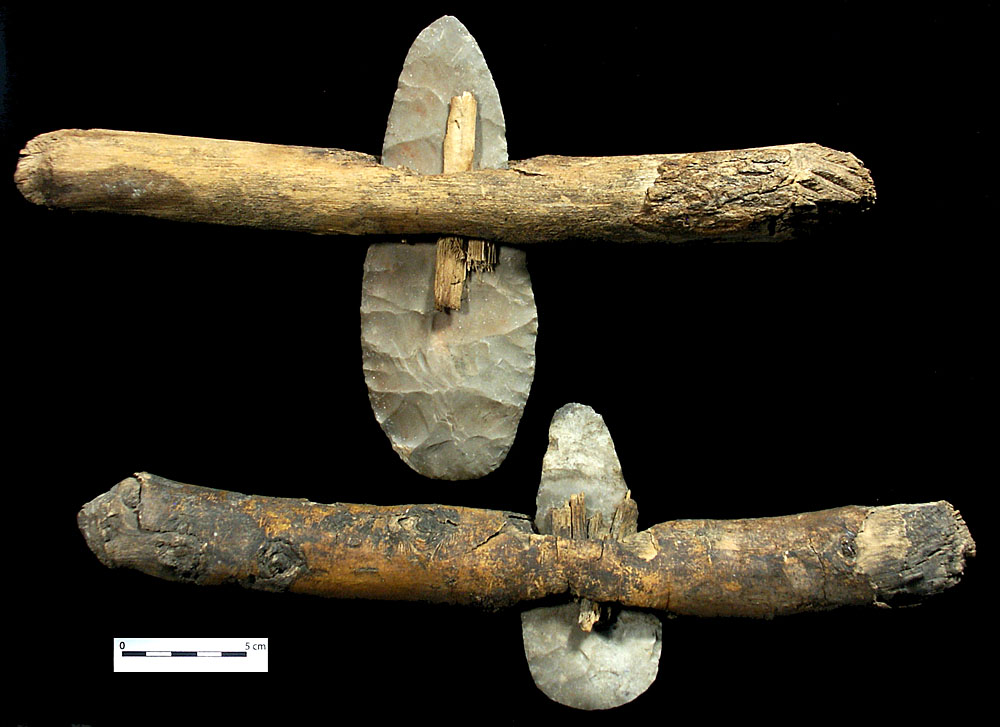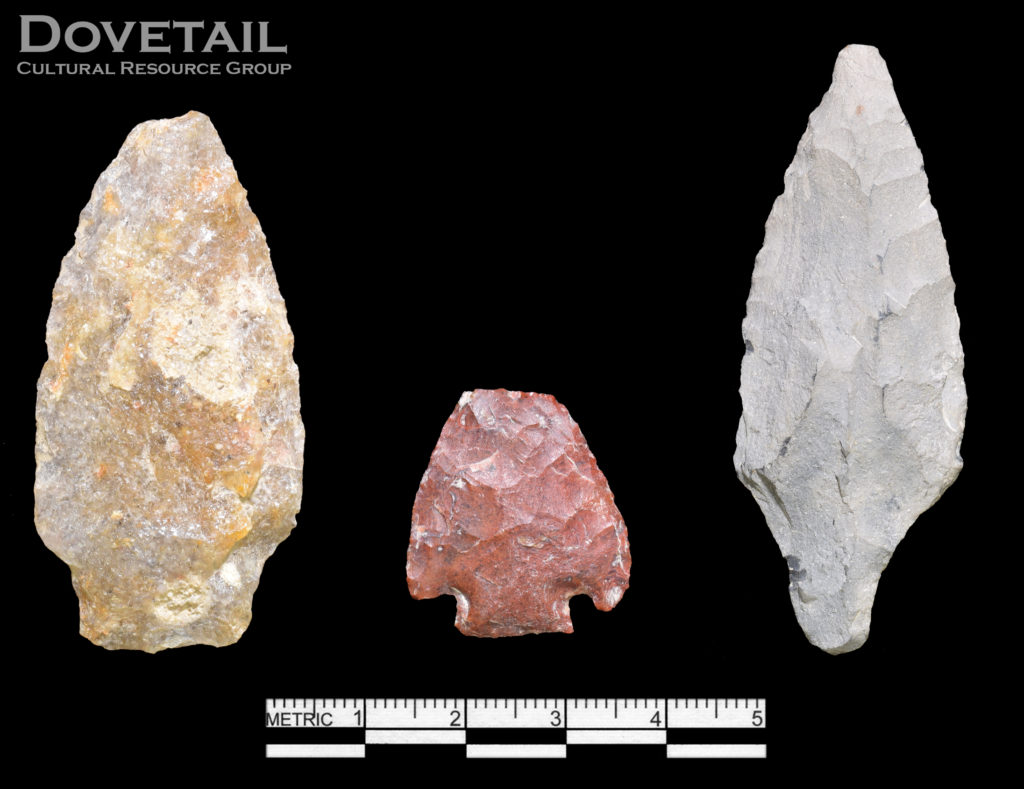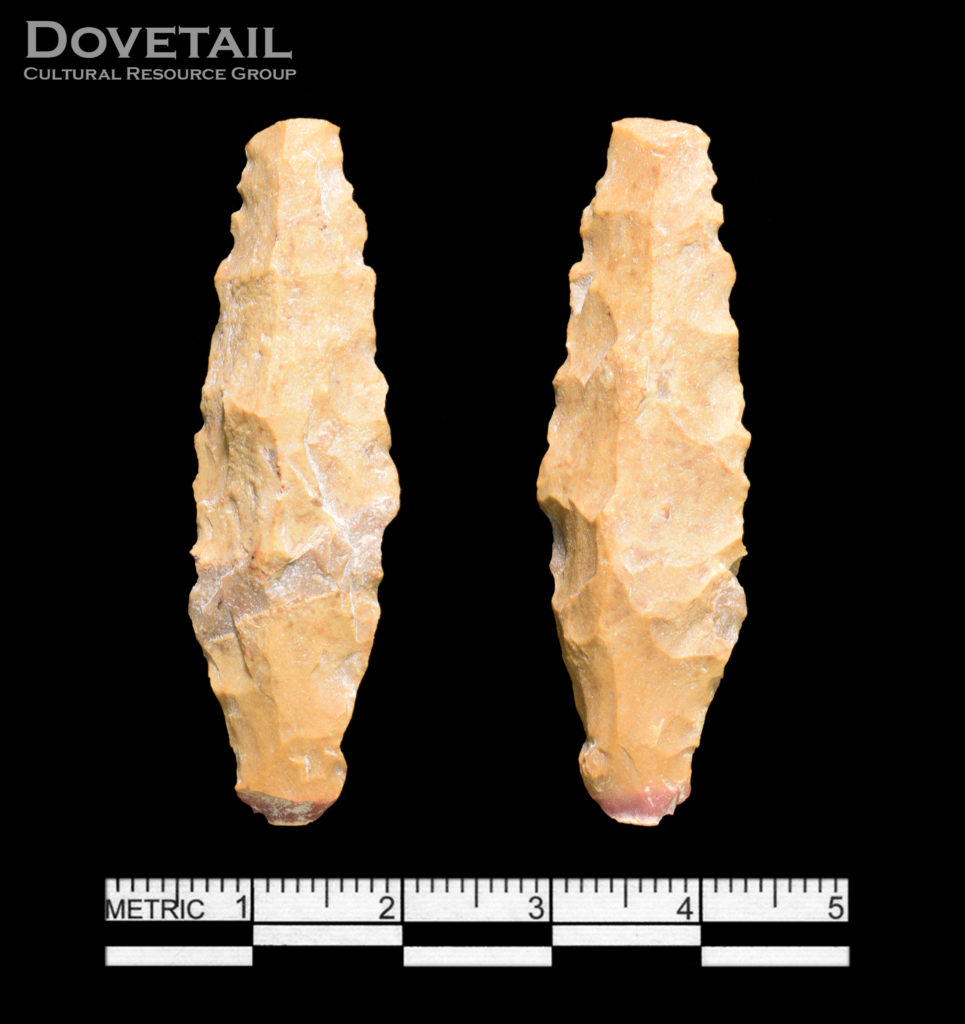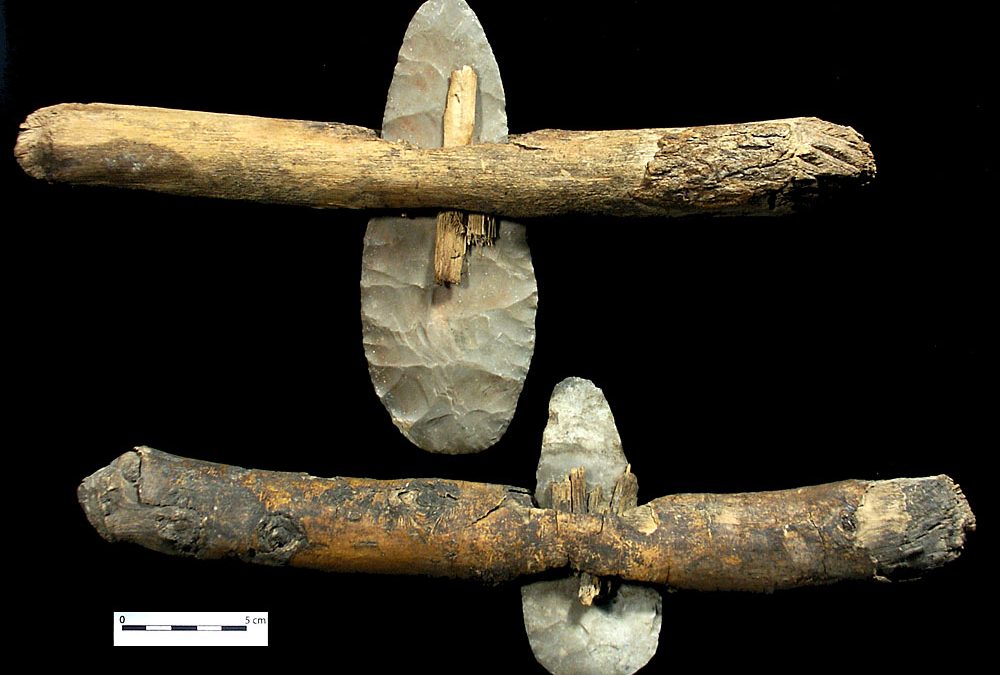By: Andy Martin
Today we’re talking about one of the less-discussed pieces of the Native American/pre-contact tool kit…the knife. There has been seemingly endless amounts of ink spilled about projectile points and axes and pottery but believe me (I’ve looked) there’s a lot less out there about knives, particularly in the mid-Atlantic.
Knives would have been every bit as crucial to the pre-contact tool kit as the above-mentioned artifacts, so where are they? The short answer is that knives are definitely present on prehistoric archaeological sites, but not necessarily in the way we think of knives today.
First off, let’s touch on an important topic. Until the bow and arrow became widespread around 1,300 years ago, your safest bet when identifying a stone tool that has been bifacially worked (flaked to a cutting edge on both sides) is to call it a “biface.” Want to get more specific? Let’s call it a hafted biface (that’s the term I dig personally). Hafted simply means attached to a handle (or haft). The hafted bifaces shown below (Photo 1) are beautiful examples from Texas showing what we mean by hafted biface.

Photo 1: Example of Hafted Bifaces (Texas Beyond History 2020).
Hafted biface is a broad but useful term covering both hafted cutting tools like knives and projectile points (bifaces meant to be thrown or shot at something). To further muddy the waters, hafted bifaces are what could be called ‘long-life tools.’ Making a biface is labor and time intensive, so these tools would often have different uses over their lives. A tool might begin its life as projectile point, but due to damage or the need to perform a different task, it might then be repurposed as a knife or a drill. This is where it’s important to try and think different about the tools people used in the past. Today, a knife is a knife (except for you Simpsons fans out there when it is actually a spoon, in which case we can see you’ve played knifey/spooney before). But a tool might segway from a spear point to a knife and eventually to a drill or an awl (a small pointed tool for piercing or puncturing holes) as damage and need dictated.
So if a hafted biface can be used as both a knife or projectile point, how do we go about determining which it is?
In incredibly rare instances, it’s obvious because the hafted biface in question has been found still attached to their bone or wooden handles. Unfortunately, such finds are uncommon because soil conditions in the mid-Atlantic aren’t very conducive to preserving organic materials like wood or bone. Intact hafted tools are usually recovered from oxygen-free, muddy environments like river bottoms or bogs, or dry environments like caves. On the coastal plain, where our site was located, the chemical composition of shell middens can also preserve organic materials. So, if we aren’t finding knives still attached to their handles, how do we figure out if something is a knife or a projectile point?
Looking carefully at the edge of the tool to see how it was used is probably the best…wait for it….tool in our arsenal for determining how a hafted biface was used. In the case of projectile points, such as arrowheads or spearheads, you see very specific types of damage such as impact fractures—cracks that result from an arrow or spear striking a target or the ground resulting in a tip or other fragment breaking off. A great example of this is the Brewerton Corner Notched projectile point in the photo below (Photo 2, center artifact). On hafted bifaces that were used as knives you tend to get very different type of damage relating to a prying or twisting motions; this damage is referred to as a “transverse fracture.” You will also see damage on the sides of the tool related to the knife being used in a sawing motion.

Photo 2: These Projectile Points Were All Recovered from a Site in Northern Delaware. From left to right, we have a possible Bare Island, a Brewerton Corner Notched, and a Poplar Island. Recent research has shown that Bare Island and Poplar Island projectile points appear to have been in use from the Late Archaic (starting about 5,000 years ago) to the Middle Woodland (ending about 1,000 years ago) periods. The Brewerton Corner Notched point has a tighter date range of 5100-4300 years ago, within the Late Archaic period.
Let’s take all this data and apply it to an artifact Dovetail recently found in Delaware. First a word about our hafted biface. It’s about 47.46 cm long and 14.78 cm wide, or a little longer and thicker than a golf tee (Photo 3). It’s made of jasper, a stone found in many streams and rivers in the mid-Atlantic as well as in quarry sites in both Pennsylvania and Delaware. One such quarry site in Delaware is just a few days walk from where our artifact was recovered. As seen in the photo below, it is narrow and has serrated edges on both sides of the tool. It has also been “heat treated,” as evident by the purple base. Purposefully exposing stone to heat for a long period of time makes certain stones easier to work. The Brewerton Corner notched projectile point, pictured above, is a beautiful example of a heat-treated (also referred to as thermally altered) stone tool.

Photo 3: Thermally Altered Hafted Biface Found in Delaware by Dovetail.
So is the artifact in Photo 3 a knife? We think it is, and this analysis comes down to use wear. First you can see the fracture on the distal (or top) end of the hafted biface and it appears to be more of a snap or transverse fracture than an impact fracture. This means that the point may have broken while it was being used to cut or pry something as opposed to striking a target or the ground. Second, the serrations and damage along the sides of the tool makes it likely that our biface is a knife. It’s possible that our knife began its life as a more traditional-looking projectile point and broke before being further worked and used as a knife.
So, the next time someone tells you “that’s not a knife, this is a knife,” you can tell them “it’s certainly a hafted biface, now let’s check the sides for use wear!”
Any distributions of blog content, including text or images, should reference this blog in full citation. Data contained herein is the property of Dovetail Cultural Resource Group and its affiliates.
References:
Texas Beyond History
2020 Texas Beyond History. Electronic document https://www.texasbeyondhistory.net/trans-p/images/Carved-Rock-hafted- bifaces.html, accessed May 2021.

